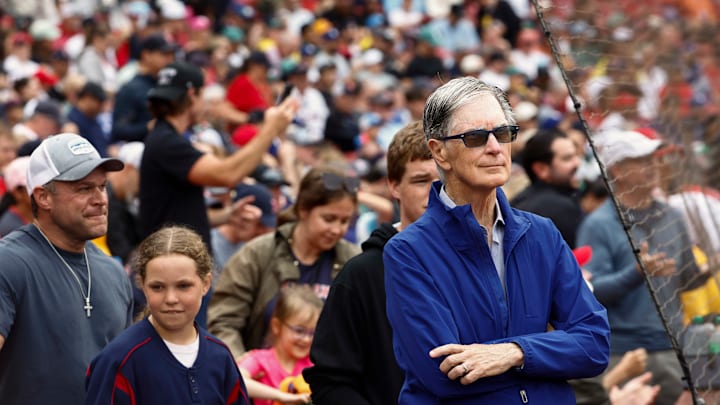The Boston Red Sox's return to the postseason (and their early dismissal) revealed everything they need to make a longer run next season. Adding a power bat, a No. 2 starter and re-signing Alex Bregman should easily be their top priorities this offseason.
The problem is that the Red Sox will have to do all three of those things — along with adding the usual bullpen depth necessary each season — to take the steps they need to compete in the American League East, alongside the Blue Jays and Yankees, who reached the World Series in back-to-back years.
Some of Boston's blockbuster moves from 2025 have reignited confidence in the front office's willingness to spend big, including the Bregman signing, the acquisition and subsequent extension of Garrett Crochet and Roman Anthony's long-term deal. But not everyone is so sure the Sox will live up to their recent precedent.
Even before any offseason acquisitions, the Red Sox sit closer to the luxury tax than they've gotten used to in the last half-decade, give or take a few years. Bregman is estimated to sign a contract with an average annual value (AAV) of around $30 million. If the Red Sox bring him back, non-tender Nathaniel Lowe, who's estimated to make around $13 million in his final year of arbitration, and Trevor Story opts in to his contract, Boston's payroll will already be at $235.42 million. The first luxury tax threshold for 2026 is $244 million.
Crochet, Anthony and Kristian Campbell all have their extensions kick in at the beginning of the 2026 season, which will raise the payroll substantially. Rumors suggest the Red Sox will be big players in the trade market this offseason, which could limit the amount of money they spend in free agency, but swapping prospects for big leaguers still adds more money to the payroll.
Some fans remain concerned with Red Sox's offseason spending plan even after big 2025 moves
Chief baseball officer Craig Breslow and the rest of the front office have changed their tune when it comes to spending this winter, and concerns for the future can no longer hamper Boston's spending with its contending window fully open. Still, the Red Sox's recent spending raises questions about their commitment. Journalist Joon Lee posted to Twitter a chart of all 30 MLB teams' revenue compared to their spending — Boston, one of the biggest markets in the league with one of the wealthiest owners, still spent just 42.1% of its 2024 revenue on the payroll last season. That's less than the Rockies and A's spent on theirs.
Fans have grown used to the Red Sox talking a big game about how important it is to compete for division titles and championships, then delivering lackluster offseason additions. Things may have seemed changed when they landed Bregman, but he only stuck around for one year in hopes of finding the long-term deal he wanted all along, which the Red Sox had more than enough money to give him from the jump. Now, they'll have to try and deliver again by beating out more competition in a weaker market, and some reporters have already speculated that they won't meet his price.
Tight payroll restrictions and concerns about the luxury tax cannot be a factor this winter if Boston is serious about contending. Re-signing Bregman and adding another consistent bat are non-negotiable, but won't come cheap, as Breslow and team owner John Heny well know.
The Red Sox saw what happened during the 2025 season when they put real effort and funds behind their roster construction — Fenway Park sold out on a regular basis, Boston's Fenway Green City Connect uniforms were an instant bestseller and fan engagement is high again. The Red Sox learned that they get back what they put into the roster, and that trend should continue into 2026 and beyond.
